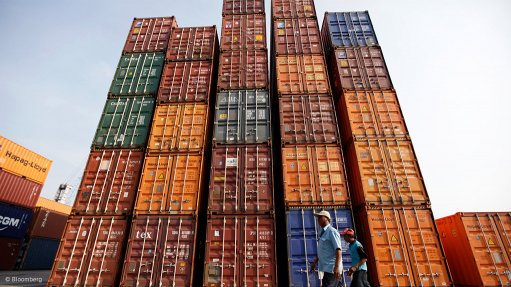
The legal instrument governing the creation of the so-called Tripartite Free Trade Area (T-FTA) – encompassing 26 mostly Southern and East African countries – would be formally launched at the third Tripartite Summit being held in Sharm el-Sheikh, Egypt, this week.
However, the actual tariff phase-down schedules – the main prerequisite for trade liberalisation across the bloc, which stretches from Cape to Cairo – had not yet been finalised and would still need to be negotiated over the coming 12 months.
In a telephonic interview from Egypt, Trade and Industry Minister Dr Rob Davies told Engineering News Online that a “roadmap” had been agreed for meeting a revised T-FTA implementation deadline of the end of 2016.
The T-FTA negotiations were launched in 2011 by the Common Market for Eastern and Southern Africa, the East African Community (EAC) and the Southern African Development Community, with an aspiration of concluding the negations in as little as three years.
“I’m not surprised that the timeframe that we indicated in 2011 has not been met, [because] as Trade Ministers we had always indicated that it could take between three to five years; so we are still within that timeframe,” Davies said.
He stressed that progress had been made, including the finalisation of the overall architecture, which confirmed that existing preferential trade arrangements among participants should not be “unpicked”.
The current focus, therefore, was for participants to “exchange offers” with those countries and/or regional blocs with which preferential agreements remained absent. In the case of the Southern African Customs Union countries of Botswana, Lesotho, Namibia, Swaziland and South Africa, offers had been exchanged with the EAC, while its offer to Egypt was close to being finalised.
The updated timetable provided a year for countries to complete the tariff-schedule negotiations, which would result in an FTA covering a combined population of 625-million people and a total gross domestic product (GDP of $1.6-trillion.
“I think it is possible to meet the new revised deadline and what we are recording [this week] is progress and a step further forward,” Davies said.
However, he admitted that the Ministers involved would still need to explain to their domestic constituencies that, while the T-FTA had been launched, business interactions on “free-trade-area terms” would not be possible until phase-down schedules had been wrapped up. “But we have a roadmap for the conclusion of the rest.”
The intention was to follow up the conclusion of the T-FTA, with the launch of negotiations on the establishment of a Continental Free Trade Area (CFTA). “Once established, the CFTA will offer a market of over 1-billion people and a GDP of $2-trillion,” Davies concluded.